Tulips
Once the tulips in our garden were finished and petals lying on the grass thanks to a fall of hail at the beginning of May, I decided to see what dye could be extracted from them. The petals were steeped in recently boiled water in a bucket overnight, then simmered gently for 30 minutes with fibres. I wanted to avoid a pale brown by heating too much, and I was pleasantly surprised by the vibrant chatreuse green in the alum mordanted yarn and non mordanted gauze next morning. Heating one of the skeins gently in diluted iron water for a further 15 mins gave a dark olive.
Rhubarb
We planted some rhubarb in our vegetable trug last year but one of the plants was not looking so clever, so when the offer from my husband came to "use the root if I wanted" I jumped at it.
I cleaned and chopped up the precious root, simmering it for 1 hour then straining out and simmering 2 small skeins of wool and gauze in the dye for a further hour. The one root only permitted me 100% wof strength but a pleasant pinkish brown was achieved, which changed to a duller brown dipped in room temperature iron water. Heating up the iron water would probably have changed the colour more dramatically but would have been more harmful to the wool fibres..
I cleaned and chopped up the precious root, simmering it for 1 hour then straining out and simmering 2 small skeins of wool and gauze in the dye for a further hour. The one root only permitted me 100% wof strength but a pleasant pinkish brown was achieved, which changed to a duller brown dipped in room temperature iron water. Heating up the iron water would probably have changed the colour more dramatically but would have been more harmful to the wool fibres..
I cut 3 stalks of the rhubarb and, after a rhubarb crumble was made (great recipe from Nigella using amaretto biscuits in the crumble, that's the secret definitely), I prepared the leaves for further mordant purposes. Having read all the googled research on the dangers of handling rhubarb leaves containing oxalic acid, I took no chances. I donned a charcoal filter mask, rubber gloves and simmered the chopped leaves on a camping stove outside. To maintain a 200% wof concentration I only managed to treat a few skeins of the wool, predictably turning a pale mucky khaki colour.
One of these skeins I tried in the next dye made from dock leaves....
One of these skeins I tried in the next dye made from dock leaves....
Dock leaves
I should stress that the dock leaves were not actually in our garden of course but I picked a few from through the back fence.
The leaves were treated as for the tulip leaves and the resulting colours shown below
The leaves were treated as for the tulip leaves and the resulting colours shown below
It was interesting to note that the un mordanted yarn (not shown in above photo as it was the one iron modified) was very similar to the rhubarb mordanted one even though the starting yarn was quite a different colour. Not sure if this meant less dye was taken up by rhubarb mordant relative to alum mordant or just didn't give that brighter yellower look associated with alum.
Buttercups
Perhaps as predicted by the yellow marks one often gets on handling the flowers, the resulting dyed fibre was a lovely pale yellow - certainly not as strong a cow parsley but distinct nonetheless for 150% wof. Simmering in iron water gave a darker khaki green.
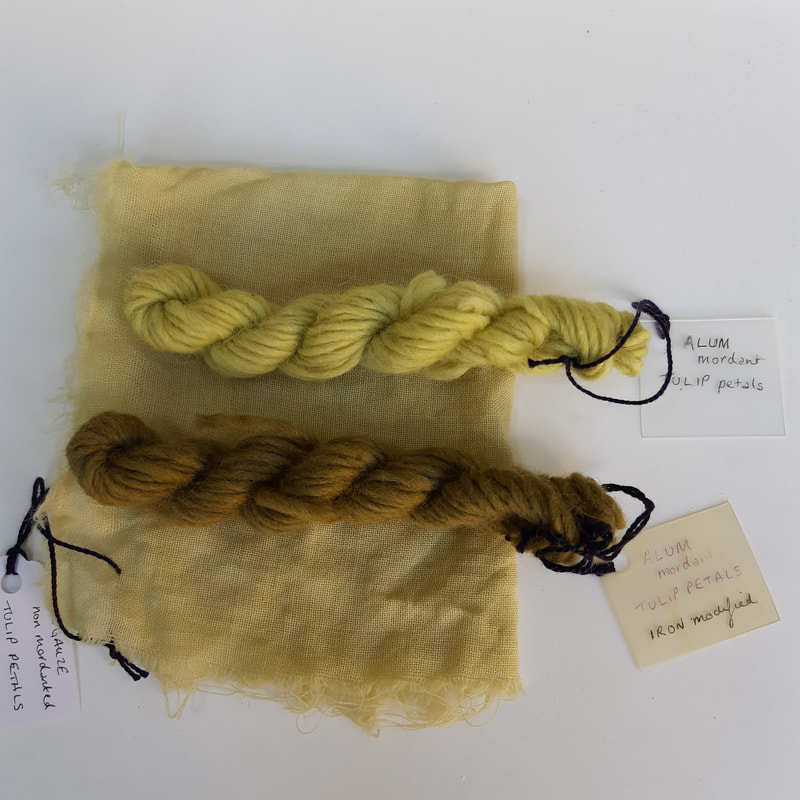
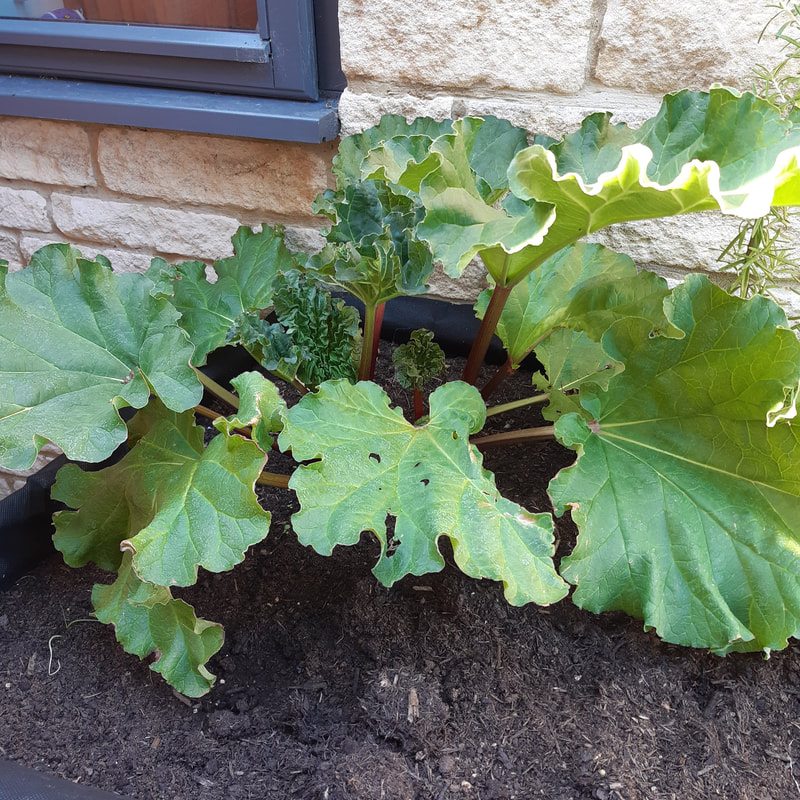
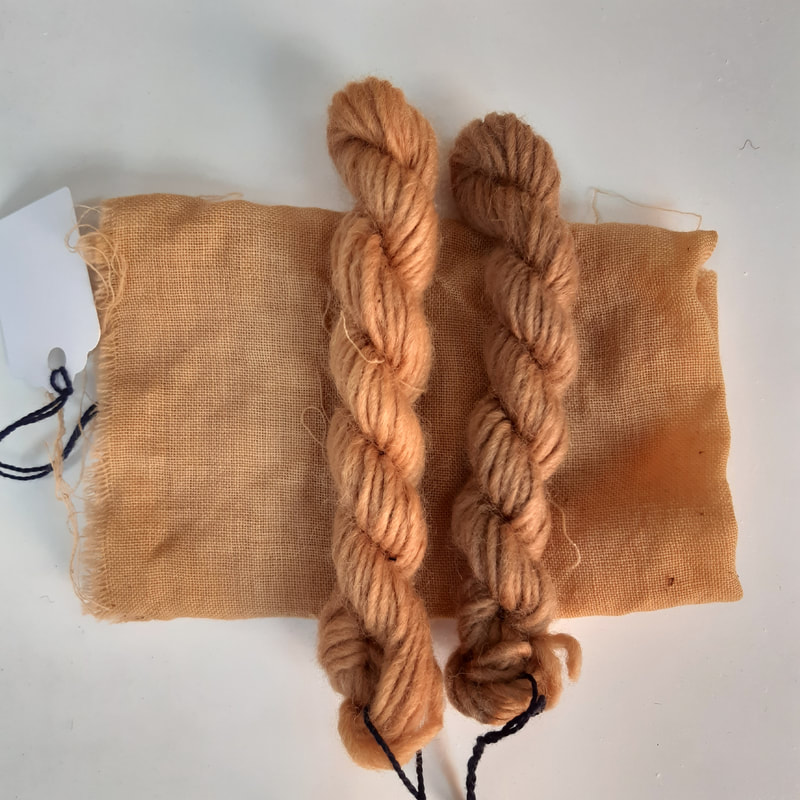
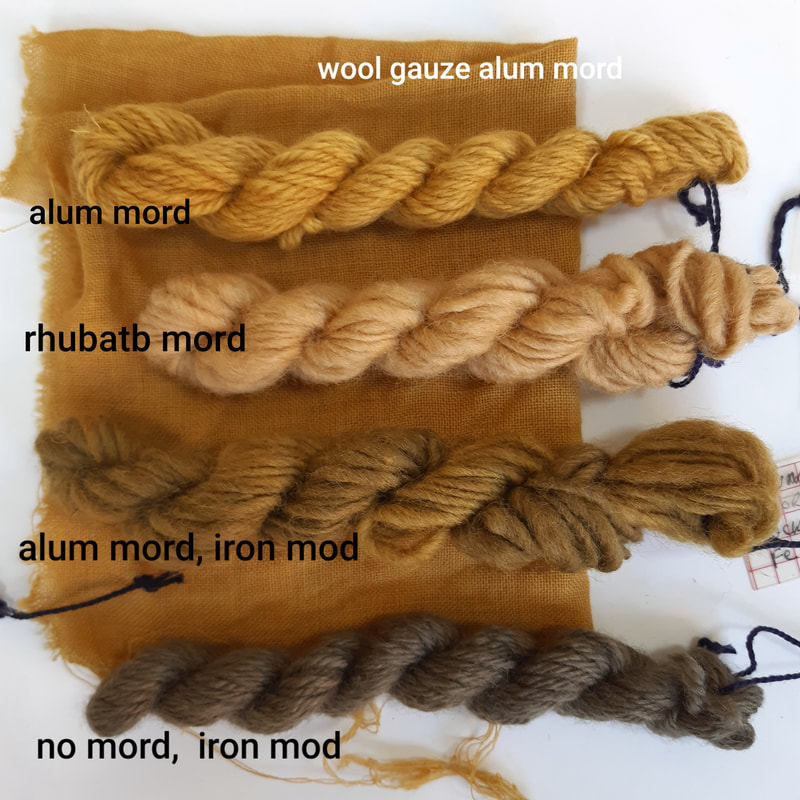
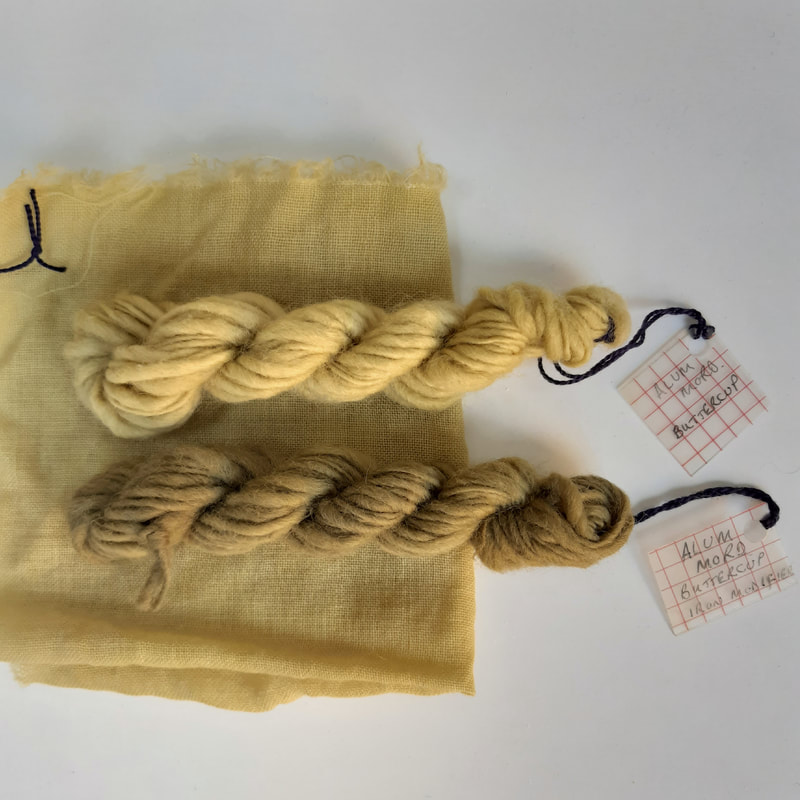
 RSS Feed
RSS Feed
